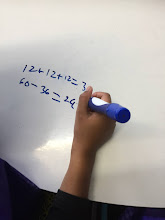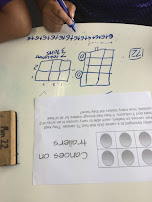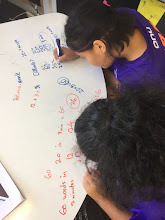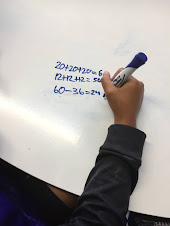Room 22 Collection of Narrative Biographies
Below are the slides which Alexis presented at one of our Team Folau meetings. She talked through the slides and the ideas that stood out clearly for me were; Imagery, Character developments, and Historical consciousness.
A biographical narrative contains biological information, physical descriptions, action details, anecdotes, and personal interpretations of the subject. Authors of biological narratives typically choose people or characters that have personal significance to them. The point or direction of the narrative outlines the personal impact the subject has in the author's life. In a biographical narrative, the author highlights certain details to develop an in-depth impression of the person. Sensory details replace direct explanations. The author creates an emotional impact with the narrative using specific and highly descriptive words and phrases.
Thoughts and summaries expand upon the details and emphasize the turning points in the narrative. Personal perspective is a key aspect of a biographical narrative. The thoughts of the author relate the turning points of the subject to their own life throughout the narrative. The introduction and conclusion of the narrative tie the elements of the story together and summarize the overall meaning.
Biographical narrative essay
While researching the subject, you should collect all the basic facts of your subject’s life experience. These include Date and place of birth and death Family information Lifetime accomplishments Major events of life Effects/impact on society, historical significance.
In researching simply to find an individual to create a biography, you should first look to find an individual that is interesting to you. The more you are interested in the individual the more apt you will be to recreate this individual's life in a manner that is engaging to the reader once your biography is complete. Be sure to look into not only the obviously important facts. Depending on the amount of information you have you may display your findings simply in chronological order of the individual's life, or you may choose to travel out of chronological order and explain events in a piecemeal fashion to back up logic or reasoning as to why other events occurred within the person's life.
You will choose your person because you think he or she is interesting, so you certainly do not want to burden your paper with an inventory of boring facts. The last thing you want to do is bore your teacher. Your goal is to impress your reader. As always, you will want to start off with a bang and captivate your reader. It is a good idea, to begin with, a really interesting statement, a little-known fact, or a really intriguing event. After all, your teacher has probably read other biographies concerning your subject. You should avoid starting out with a standard but a boring line like "Meriwether Lewis was born in Virginia in 1774." It is possible to start like this: Late one afternoon in October 1809, Meriwether Lewis arrived at a small log cabin nestled deep in the Tennessee Mountains. By sunrise on the following day, he was dead, having suffered gunshot wounds to the head and chest. His body was also slashed several times with a shaving razor.Writing guidelines In a biographical essay, you write about the life and personality of a person who actually lived. A biographical essay should have the following characteristics: a real-life subject, a thesis statement that states a specific idea about that person’s life and achievements, an account of one or more major events in the subject’s life, a description of the subject’s key character traits.
Prewriting Choose your subject: Choose a person whose life seems especially appealing to you. Once you have decided on a subject, take notes about what you already know- about his or her life and personality.
Gather information: Once you have reviewed what you know, think about what areas of this person’s life you would like to focus on. Then, write down some questions to help you direct your research.
Draw conclusions: Based on your research, make some decisions about your subject’s personality. What did he or she value most? Is there a connection between your subject’s character traits and his or her role in history?
Write a thesis statement: You have learned more about your subject and reflected on his or her life and personality. You are ready to write a thesis statement. George Washington was not a very imaginative man, but he had a practical, steady mind—a quality that was necessary to give stability to our new nation.
Drafting Decide how to organize your writing. The simplest way to organize a biographical essay is to cover the main events of the subject’s life chronologically. Another type of organization focuses on a few important events in the person’s life, building up to the one that you think is most important.
Write an introduction. The first paragraph of your essay introduces your subject. The introduction leads up to the thesis statement, which expresses the idea you will develop in your essay. Write the body paragraphs: Support your thesis with examples and details. Use the information you have gathered to support and develop your idea about your subject. Use an informative, lively tone: As you write your draft, enliven your writing with vivid language and colorful details that appeal to the senses. Write a strong conclusion: In your final paragraph, restate your view of the person about whom you are writing. Tell the reader what this individual has contributed to the country.
Revising Revise to strengthen your thesis: Do the introduction and thesis statements create a clear, unified impression of the person about whom you are writing? Do the body paragraphs develop this impression? Revise to meet written English-language conventions: Are all sentences complete, with a subject and a verb? Are all the words spelled correctly? Are all proper nouns capitalized, including names of people and places? Did you use proper punctuation?
Presentation Does not provide any facts, details, or examples about the subject’s life and personality Does not discuss the life and personality adequately in any detail; does not link supporting information to the thesis Discusses the life and personality adequately with several facts, details, or examples; links most supporting information to the thesis Discusses the life and personality of the subject in a way that develops a clear impression of the person with facts, details, and anecdotes from the subject’s life; links all information to the thesis
Use of Language Writes incomplete sentences; uses language poorly; sounds confused; includes many Uses the same types of sentences without varying them; repeats words; includes many mechanical errors Uses some variety in sentence structure and vocabulary; includes few mechanical errors Varies sentence structure and vocabulary successfully; includes no or very few mechanical errors
 |
 |















































